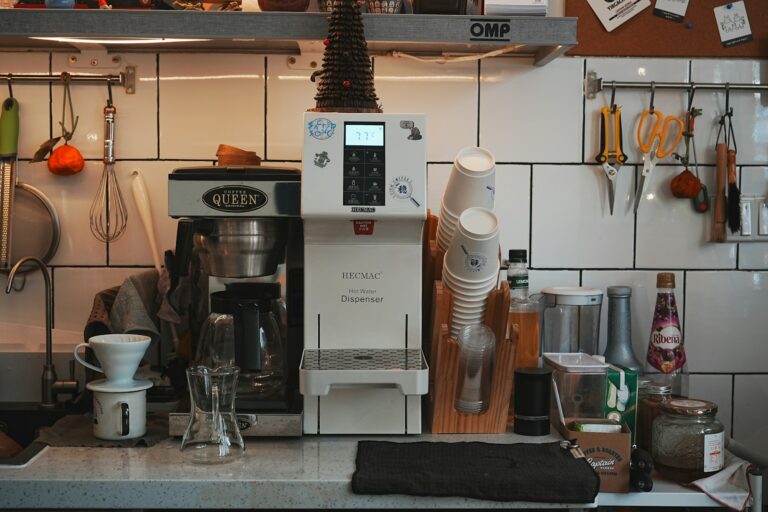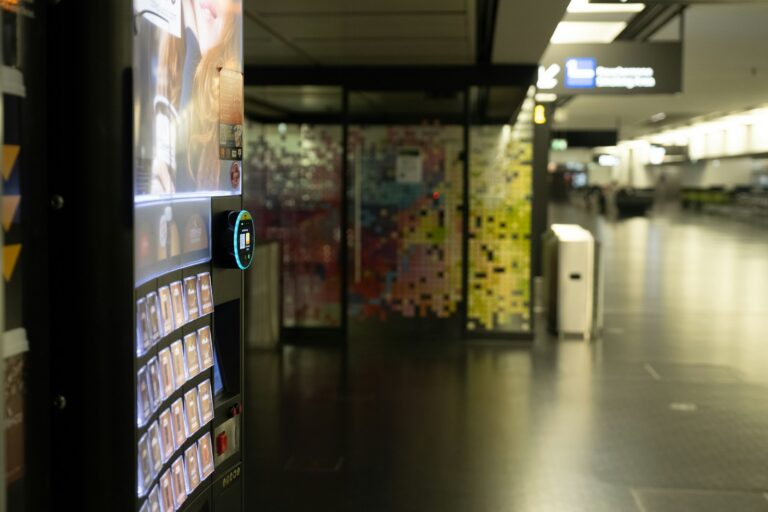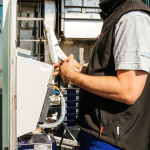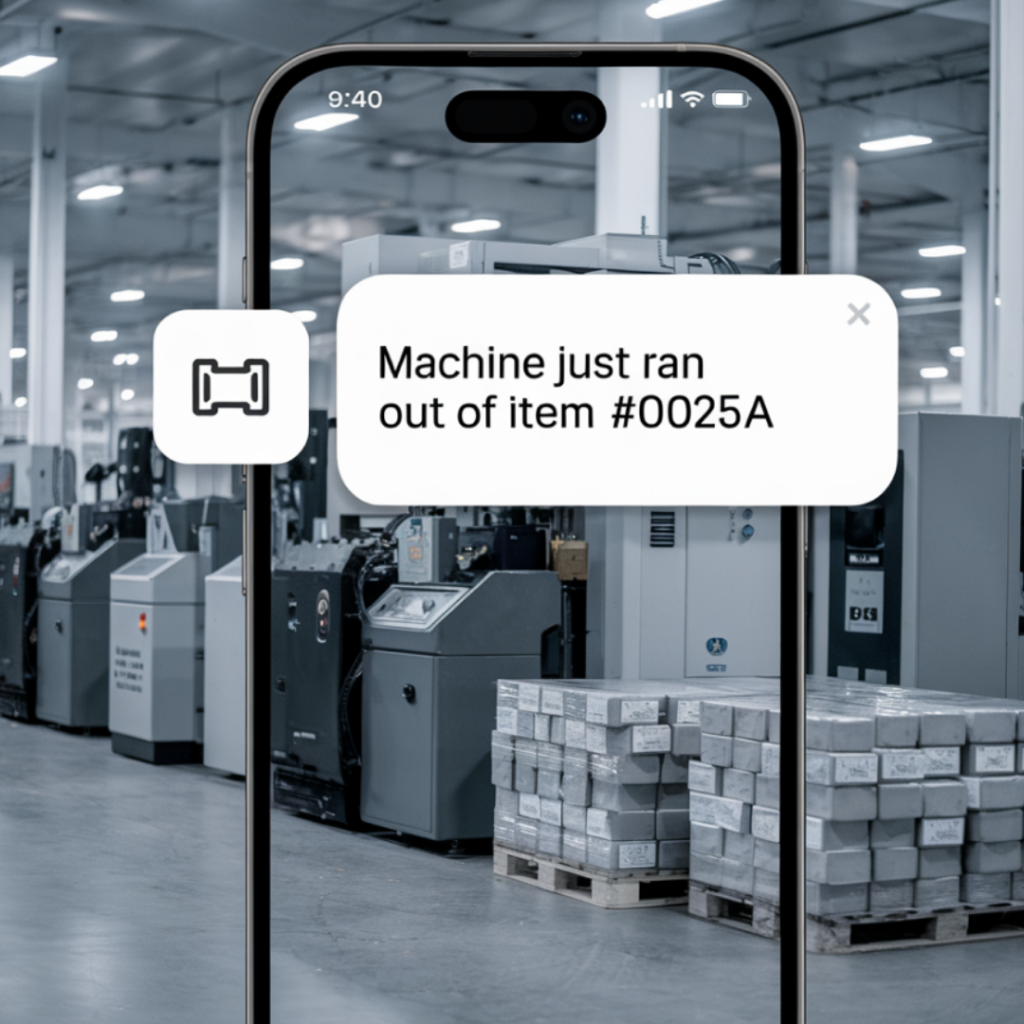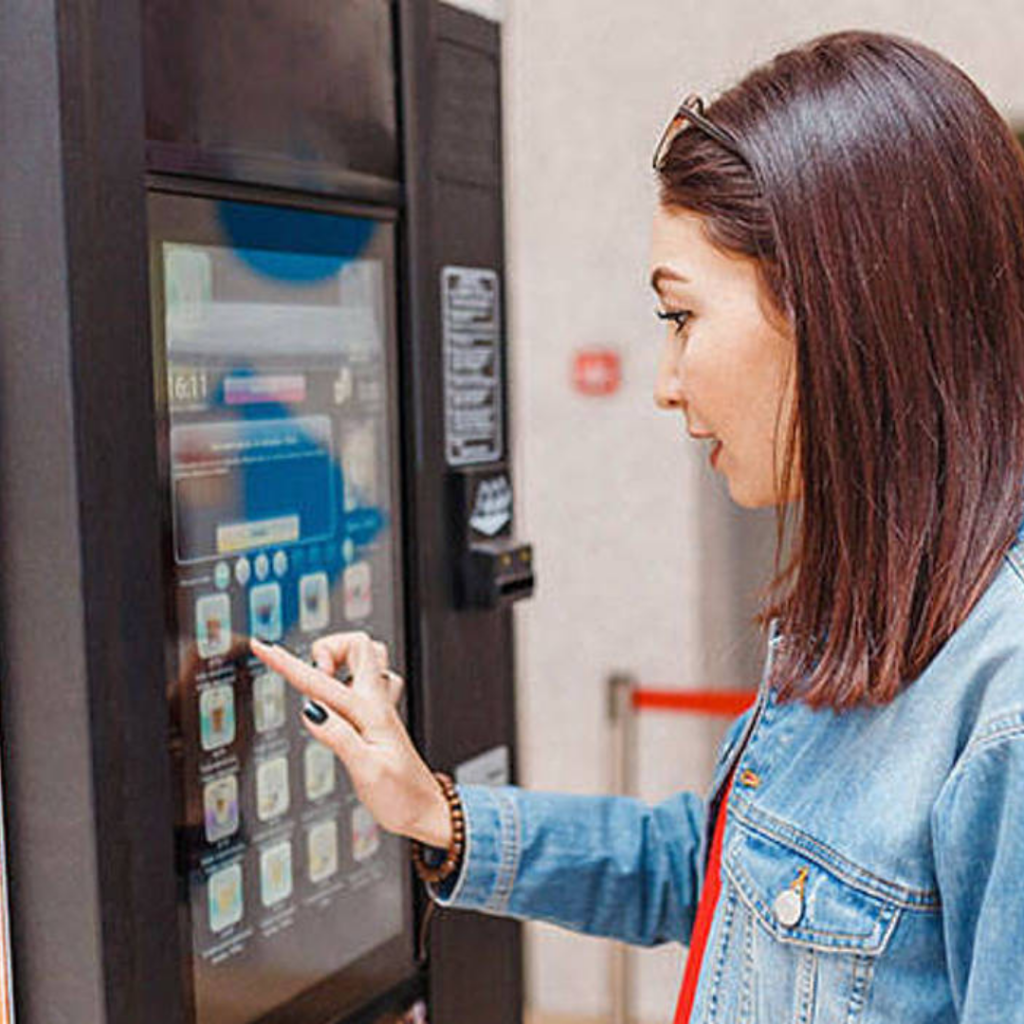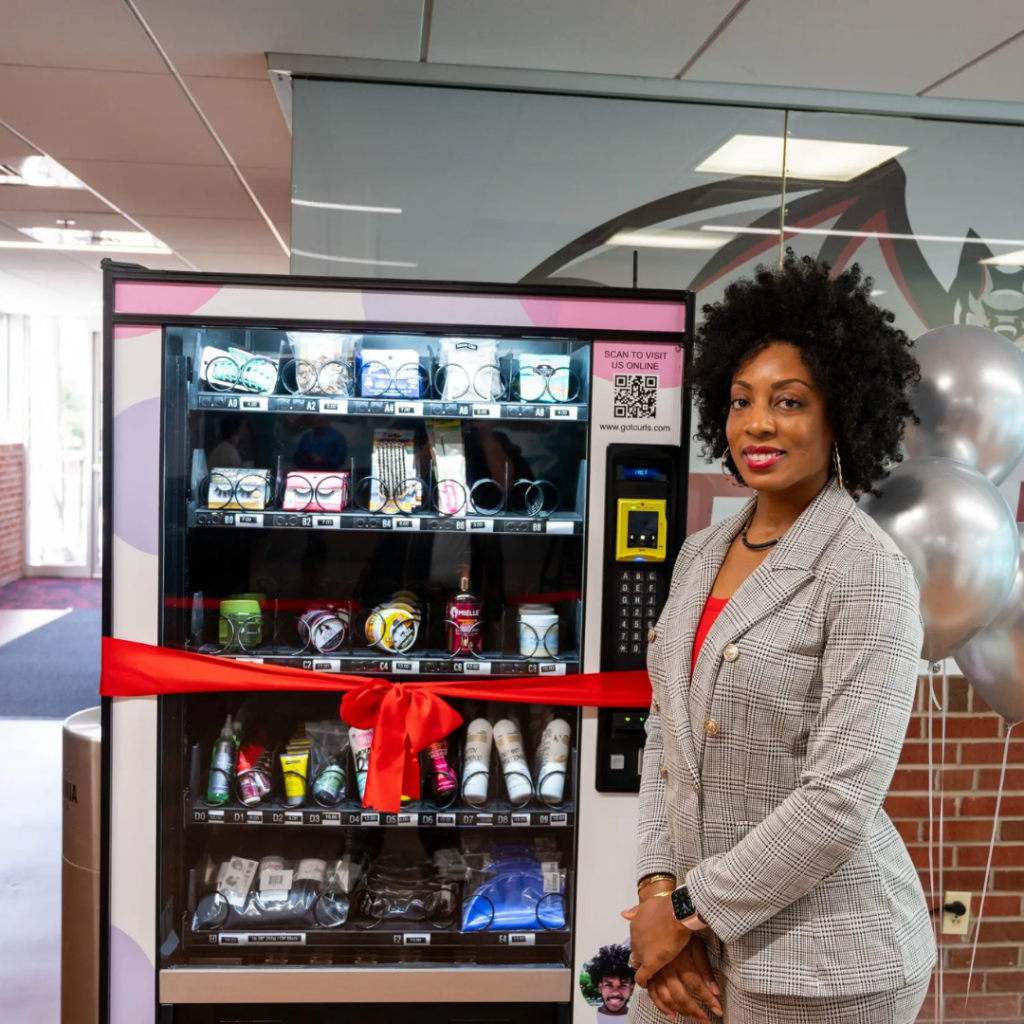How To Pitch Prospects for Vending Machine Placement

If you run a vending machine startup, learning how to approach prospects for vending machine placements is the single most important skill you can develop. The right location can turn one machine into a steady asset, and the wrong site can leave you refilling a slow machine for very little return. When you think about prospects for vending machine partnerships, focus on foot traffic, simple customer needs, and a clear value share with each location. If you get approaching prospects vending machine startup outreach right from day one, you give your business a strong base to grow from.
In this guide you will learn a practical, step by step way to find and land vending machine location prospects, talk to decision makers, handle questions, and use simple data to close deals. You will also see how modern vending machines with cashless payments, remote monitoring, and cloud tools make your offer stronger and easier to manage.
1. Why Location And The Right Prospects Matter First
Before you think about products or routes, you need a clear plan for prospects for vending machine placement. A great machine in a bad spot will not sell much. A basic machine in the right lobby, break room, or waiting area can earn every single day.
Most operators report that a single machine can bring in around 300 to 1500 dollars per month in revenue, depending on the site, product mix, and traffic level. If you focus your approaching prospects vending machine startup efforts on places with steady foot traffic, long dwell time, and clear customer needs, you give yourself the best chance of landing in the higher part of that range.
Your pitch becomes even stronger when you can tell a prospect that you use modern vending machines with card readers, mobile wallets, and simple touch displays. These features show that you care about customer experience and reduce the workload for the host location.
2. Understand Who You Want To Reach
Strong prospecting starts with a clear picture of who uses your machines. For most vending machine startup location acquisition efforts, the best categories look like this:
- Offices and business parks where staff want quick snacks and drinks without leaving the building.
- Schools and colleges where students and staff need fast, low cost options between classes.
- Gyms and fitness centers where people look for water, sports drinks, and light snacks.
- Hotels and motels where guests want late night and early morning options when the kitchen is closed.
- Shopping areas and transport hubs where people pass through, wait, or rest between errands.
Each of these environments calls for a different mix of machine and product. Matching the right unit to each prospect helps you land vending machine location deals and boost sales.
Match Environments With The Right Machine Types
Think about the main need in each site, then match it with the correct equipment:
- Offices and call centers often work well with snacks vending machines or coffee vending machines. Staff want quick comfort food, chips, bars, and sodas between calls or meetings.Many operators use seaga vending machines here because they are reliable and easy to service.
- Gyms often do better with water and sports drinks in drinks vending machines, plus a smaller range of protein bars and light snacks.
- Schools may need a balanced option, so a combo machine that holds drinks and snacks together can be a strong fit when policy allows it.
- Hotels often benefit from combo & Food vending machines on each floor so guests can grab drinks and snacks without going to the lobby.
By pairing each environment with the right equipment from the start, you increase the chance that your prospects for vending machine placement will see strong sales volume and steady commission income.
3. Research Locations And Build A Short List
Once you know your target profile, you can start building a list of vending machine location prospects. Focus on places where people wait, walk, and spend time without easy access to food and drink.
Good signs include:
- Lines at reception or payment points.
- Busy break rooms with limited food options nearby.
- Waiting areas in clinics, salons, and auto shops.
- 24 hour or late night operations with few nearby stores.
Key Factors To Check For Each Prospect
When you assess each site, look at:
- Foot traffic (how many people pass by or sit nearby each day).
- Competition (existing vending units or stores very close to the spot).
- Hours of operation (longer hours usually mean more sales).
- Parking and access (for service vehicles and restocking).
- Current machines (old gear that does not accept cards can be a good upgrade opportunity).
You can use simple tools to support your vending machine startup location acquisition work. Do a quick lunch time foot count, ask staff how often they leave to buy snacks, or run a short QR survey on site if you know the owner. Over time, you can also work with location matching vending machines services that pre qualify sites based on foot traffic and buyer profiles.
4. Build A Simple Business Pitch
When you are approaching prospects vending machine startup owners or site managers, keep your pitch short and clear. Most decision makers are busy and want to know two things: how does this help my people, and how much effort will it take from me.
Focus On Convenience And Zero Work
Structure your pitch around three points:
- Convenience: Your machine gives staff, guests, or students fast access to food and drink on site.
- No workload: You handle stock, cleaning, maintenance, and money collection.
- Fair value share: The location earns a simple percentage of sales with no upfront cost.
Highlight Technology That Reduces Hassle
Modern vending machines accept cards and mobile wallets and can even support QR based staff accounts. Add a short line such as:
“We use machines with card readers and mobile pay, plus remote monitoring so we can see stock levels in real time and fix issues fast. You do not need to touch the machine at all.”
This shows your prospects for vending machine deals that you invest in reliable equipment and take service seriously.
5. Handle Common Questions And Concerns
When you start real conversations, your vending machine business prospecting will bring the same questions again and again. Prepare simple answers that remove stress for the location.
“We Do Not Have Much Space.”
Explain that compact snacks vending machines or slim vending unit can fit in small corners, near elevators, or beside break room seating. Offer to visit and measure the area so you can suggest the smallest footprint that still offers a good selection.
“Who Handles Upkeep And Repairs?”
Tell prospects that you handle all service tasks: restocking, cleaning, cash collection, card reader updates, and repairs. Share your planned visit frequency, for example once or twice per week for a busy office, and make clear that they only need to call or message if they see an issue.
“How Much Do We Earn?”
Most vending machine location deals use a simple revenue share model, where you pay the site a percentage of gross sales. Typical location commissions range from 5 to 25 percent of gross monthly revenue, with many operators settling around 10 to 20 percent for standard sites.
If a machine brings in 500 dollars per month and you agree to a 15 percent share, the location earns 75 dollars each month without any extra work. This kind of clear example helps your prospects for vending machine placements understand the value in simple numbers.
Use Cloud Software To Reduce Downtime
You can reassure owners further by explaining that you use vending machine cloud software. Remote monitoring vending machines report sales and stock levels in real time. That means you can refill popular items before they run out and respond quickly if a machine has a technical problem.
6. Create A Basic Proposal Package
Once a prospect is interested, move from a casual talk to a simple written proposal. This makes your approaching prospects vending machine startup process feel more professional and gives both sides something clear to review.
What To Include In Your Proposal
- Machine type: snacks vending machines, drinks vending machines, or a combo unit, with a brief description of features such as card readers and remote monitoring.
- Placement idea: a photo or sketch of the planned location, for example “near the break room door” or “beside the lobby seating.”
- Product list: a sample menu with top items and price ranges.
- Revenue share model: your standard commission percentage and when you send payments.
- Service schedule: how often you restock and clean the machine.
- Support and contact info: who to call or message if there is an issue.
Give Simple Performance Examples
You can add short sample figures from similar sites to make the value more real. Many operators report average machines earning around 300 dollars per month, with stronger spots reaching 500 dollars or more in gross revenue. This keeps expectations realistic but still positive.
If the prospect asks about growth or adding more equipment later, you can mention that your company also offers financing support so you can scale up quickly when an early site performs well.
7. Network And Make Contact With Prospects
Landing high quality vending machine location prospects is part research and part relationship building. Use more than one channel to reach decision makers.
Visit Nearby Businesses
Walk into offices, gyms, hotels, clinics, and small factories in your local area. Ask for the owner, manager, or facilities lead. Use a short script like:
“Hi, I run a local vending business. We place vending machines in offices and gyms at no cost, and we handle all stock and service. If there is space for a small snack and drink setup here, would you be open to a quick look at what that could earn this location?”
Keep it friendly. Your goal is to start a chat, not close on the spot. This is the heart of approaching prospects vending machine startup work.
Use Online Channels
- Social platforms: Search for local business owners on LinkedIn or Facebook, then send a short, direct message.
- Local groups: Join business associations, chamber of commerce groups, and co working communities.
- Events: Attend local meetups and trade shows where owners gather.
Mention that you are focused on vending machine business prospecting in the local area and that you offer a simple vending machine partnership pitch with no upfront cost. Many owners will at least be curious to learn more.
8. Follow Up The Right Way
Very few prospects say yes on the first contact. Strong results come from polite, steady follow up.
Use A Simple Follow Up Schedule
After your first talk or message, make a note to follow up in five to seven days. If you have not heard back, send a short reminder such as:
“Just checking in on the snack and drink machine idea for your staff. Happy to share a one page summary with sample numbers if you would like.”
You can also set one more follow up a week later. If they still do not respond, move them into a long term list and check back in a few months. This keeps your prospects for vending machine partnerships warm without feeling pushy.
Keep Messages Short And Benefit Focused
In every follow up, remind them of the core benefits: convenience for customers or employees, no cost for the machine, and a small revenue share from sales. Do not flood them with technical detail unless they ask for it.
9. Offer A Low Risk Trial Placement
A trial period is one of the strongest tools in your vending machine site acquisition process. It helps hesitant owners move forward because they can see real data before signing a long term deal.
Design A Clear Trial Offer
- Suggest a 30 or 60 day vending machine trial period.
- Agree on a temporary commission, even if it is low or zero, while you gather data.
- Set a simple success target, for example at least 300 dollars in monthly sales or a minimum number of transactions per week.
During the trial, track sales through your cloud tools and record customer reactions. You can put a small sign on the machine asking for feedback or watch which items sell fastest. After the trial, sit down with the owner and show them the numbers. This data driven approach makes closing prospects for vending machine placements much easier.
10. Start Strong With Service And Support
Once your machine is in place, your real work starts. Good service is what turns a single site into a long term partner and a source of referrals.
Service Habits That Build Trust
- Restock consistently: Visit on the same days each week so staff know they can count on fresh stock.
- Keep it clean: Wipe the glass, buttons, and payment area each visit.
- Fix problems fast: If the location reports an issue, respond as soon as you can and keep them informed until it is fixed.
Using vending machine cloud software, you can see which machines are running low or not taking payments. That means you can plan visits more efficiently and prevent downtime before the location even notices.
Owners who see you show up on time and fix things quickly are far more likely to recommend you when a friend asks about prospects for vending machine placements in their own building.
11. Collect Testimonials And Build Trust
As you run your first few machines, start capturing simple proof of results. Testimonials and small vending machine case studies help a lot when you approach new prospects.
How To Gather And Use Testimonials
- After a few months, ask the owner or manager for a one sentence quote about the benefit they see, such as “Staff love the convenience” or “We earn steady extra income without doing anything.”
- Ask if you can use their name, role, and business logo on your one page proposal.
- Note one or two simple numbers, for example “Average monthly sales of 450 dollars with 15 percent commission to the site.”
Keep these short and clear. Over time, build a small set of vending machine case studies that show different sites: an office, a gym, a hotel, a school. When you are approaching prospects vending machine startup owners in a similar niche, you can show them examples that match their own environment.
12. Scale Up After Your First Success
Once you have one or two strong locations, it is time to think beyond single machines and start turning your early wins into a real route.
Use Profits And Financing To Add More Machines
Reinvest some of your early profit into your next unit. If your first machine brings in 400 dollars per month in gross sales with a 20 percent net margin after stock and commission, that is 80 dollars per month you can save towards another placement. You can also work with financing services partners to speed up growth once you have clear performance data.
Systemize Location Finding With Support Services
As your time fills up with service work, it can help to partner with location matching services. These providers use buyer profiles, foot traffic data, and lead generation tools to find high traffic vending spots that match your ideal customer.
Upgrade To Smarter Equipment As You Grow
When your route grows, consider adding smart vending machines and other modern vending machines with more advanced features:
- Large touch screens that show product info and promotions.
- Advanced cashless payment systems with tap, chip, mobile wallets, and loyalty options.
- Deeper remote monitoring for temperature, individual product performance, and live alerts.
These features make your offer more attractive to larger prospects for vending machine placements, such as corporate offices and multi site gyms. They also give you better data to decide which products to stock where.
Bringing It All Together
Approaching prospects vending machine startup owners and site managers can feel hard at first, but it becomes easier when you use a clear process. Define your ideal locations, research and shortlist sites, build a simple pitch, handle common questions, and support your offer with real numbers. Use trials, strong service, and cloud tools to prove your value. Then scale up with financing, location matching support, and smarter equipment.
If you stay consistent and treat each host as a long term partner, your list of prospects for vending machine placements will grow into a reliable, profitable route that can support more machines, more services, and more opportunity over time.

